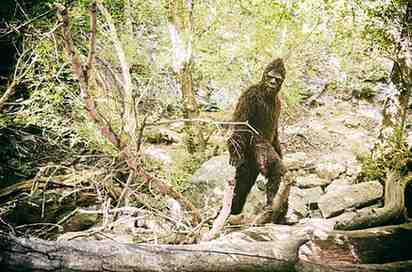
Deep in the shadows of towering trees and across vast wilderness regions, whispers of a giant, hairy biped known as Bigfoot echo through folklore. This elusive creature, also called Sasquatch, has captured imaginations for generations. But is Bigfoot a real resident of the woods, or simply a figment of our collective imagination? Let’s explore the reasons why people believe in Bigfoot and delve into the evidence, both for and against its existence.
Why We Believe: The Allure of Bigfoot
The belief in Bigfoot thrives for several reasons:
- Unexplained Sightings: For over a century, there have been countless reported sightings of Bigfoot across North America. Blurry photographs, footprint casts, and anecdotal stories fuel the fire of belief. The human mind is wired to seek patterns, and these sightings, while subjective, can be interpreted as evidence of something extraordinary.
- The Thrill of the Unknown: The vast, unexplored regions of forests hold a certain mystery. Bigfoot embodies this sense of the unknown, a creature lurking just beyond our grasp. The possibility of a large, undiscovered animal adds a layer of intrigue to the natural world.
- Cultural Connection: Bigfoot stories are often woven into the folklore of Native American tribes in the Pacific Northwest. These legends depict Sasquatch as a powerful and sometimes mischievous being, adding a cultural dimension to the Bigfoot phenomenon.
- Confirmation Bias: People tend to seek out information that confirms their existing beliefs. Those who believe in Bigfoot may be more likely to focus on blurry videos or grainy photos, interpreting them as evidence, while ignoring the lack of concrete proof.
Debunk or Discovery? Examining the Evidence
Despite the intrigue, there’s no definitive scientific evidence to prove Bigfoot’s existence. Here’s a breakdown of the available “evidence”:
- Sightings: The vast majority of Bigfoot sightings are blurry, inconclusive, or lack credible witnesses. Eyewitness accounts can be unreliable, especially under stressful or uncertain conditions.
- Footprints: Plaster casts of supposed Bigfoot footprints have often been debunked as hoaxes or misidentified animal tracks. Animals like bears can leave large footprints that can be mistaken for those of a giant bipedal creature.
- DNA Samples: Hair samples attributed to Bigfoot have yielded inconclusive results or turned out to be from known animals. DNA analysis would be the most definitive way to prove the existence of a new species like Bigfoot, but such evidence remains elusive.
The Search Continues
The hunt for Bigfoot continues, fueled by a combination of scientific curiosity, a thirst for adventure, and the hope of making a groundbreaking discovery. Technological advancements like DNA analysis and remote cameras could potentially provide more reliable evidence in the future.
Science vs. Speculation: The Bottom Line
While the mystery of Bigfoot is undeniably captivating, the current evidence falls short of scientific proof. However, the continued search for this elusive creature highlights the ongoing exploration of the natural world and the possibility of yet-undiscovered species.
So, is Bigfoot real? The answer, for now, remains shrouded in the shadows of the forest. But one thing is certain: the legend of Bigfoot will likely continue to spark curiosity and inspire exploration for years to come.


